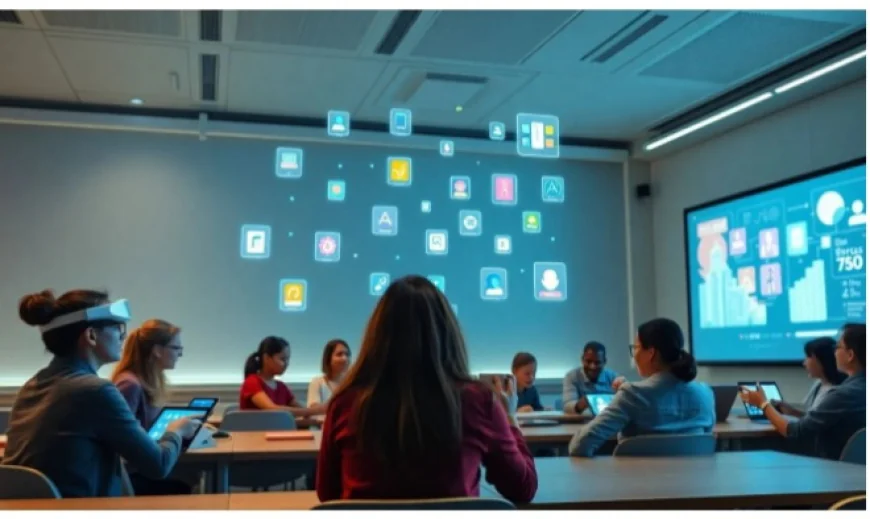The Rise of Nano-Learning: Bite-Sized Lessons, Big Results
People want to learn fast and on their own terms. Traditional training takes too long, and many people lose interest quickly. That's where nano-learning steps in. It offers small, quick lessons that pack a punch. You get the info you need in a flash, making learning easier and more effective.


The Rise of Nano-Learning: Bite-Sized Lessons, Big Results
Introduction
People want to learn fast and on their own terms. Traditional training takes too long, and many people lose interest quickly. That's where nano-learning steps in. It offers small, quick lessons that pack a punch. You get the info you need in a flash, making learning easier and more effective.
Understanding Nano-Learning: The Fundamentals of Bite-Sized Education
What is Nano-Learning?
Nano-learning means short, focused lessons that usually last just a few minutes. These lessons target specific skills or topics. Unlike microlearning, which can be a bit longer, nano-learning is all about speed and precision. It’s like taking a quick shot of knowledge instead of a big gulp.
Evolution from Traditional Learning Modes
Learning has moved fast from long classroom sessions to online courses, then to microlearning. Now, nano-learning takes it even further. Thanks to smartphones, apps, and AI, we can learn tiny pieces of info anytime, anywhere. Technology has made this possible.
The Science Behind Nano-Learning's Effectiveness
Research shows that shorter lessons fit our attention spans better. The average person can focus for about 8 seconds before losing interest. Studies also suggest quick, targeted lessons improve memory and keep learners engaged longer. This means you learn better and faster.
Advantages of Nano-Learning for Learners and Organizations
Flexibility and Accessibility
Nano-learning fits into any busy schedule. You can start a lesson during a commute or while waiting in line. With smartphones and tablets, learning is always within reach. It makes education more accessible for everyone.
Increased Engagement and Retention
Small lessons are easier to understand and remember. When lessons are short and targeted, learners stay focused. Elements like gamification, videos, and pictures make lessons fun and memorable. This boosts how much you really learn.
Cost-Effectiveness and Scalability
Creating long courses costs a lot and takes time. Short lessons save money and are quick to make. They can reach thousands of people easily, which makes scaling simple for big companies and schools.
Real-World Examples of Success
Duolingo, the language app, uses bite-sized lessons to teach millions worldwide. LinkedIn Learning offers short courses for skills like coding or sales. Many companies report better employee performance after switching to nano-learning modules.
Implementing Nano-Learning in Various Settings
Corporate Training and Employee Development
Businesses can send small lessons to new hires or for ongoing skill-building. During onboarding, split up training into quick, easy steps. Use micro-content to keep topics fresh and relevant.
Educational Institutions and E-Learning Platforms
Schools can design courses with short modules. Interactive quizzes and videos keep students interested. It makes learning more fun and less overwhelming. Teachers can also track progress easily.
Healthcare, Tech, and Specialty Fields
Nano-learning works well in fast-changing fields. Developers can learn new coding languages with tiny tutorials. Medical staff can review procedures quickly through short videos. It helps keep skills sharp.
Best Practices for Creating Effective Nano-Learning Content
Make messages clear and simple. Use visuals like pictures and diagrams to explain ideas. Mix videos, podcasts, and articles for variety. Always keep lessons aligned with clear goals. Immediate value helps learners stay motivated.
Challenges and Limitations of Nano-Learning
Potential for Oversimplification
Focusing only on short lessons risks missing important details. Balance is key—cover enough without overwhelming the learner. Keep content detailed but concise.
User Engagement and Motivation
People might lose interest if lessons are too quick or repetitive. Add rewards, progress indicators, and opportunities to share achievements. That keeps motivation high.
Technological Barriers
Not everyone has access to fast internet or smartphones. For some users, nano-learning may not be practical. Make sure content is accessible on all types of devices and in different regions.
The Future of Nano-Learning: Trends and Predictions
Integration with Artificial Intelligence and Personalization
AI can help customize lessons based on each learner’s pace and style. This makes nano-learning more effective and fun. It becomes like a personal tutor in your pocket.
Growing Adoption in Corporate and Education Sectors
More companies and schools are investing in bite-sized learning tools. Expect this trend to accelerate as demand for flexible education rises.
The Role of Immersive Technologies
AR (augmented reality) and VR (virtual reality) could make tiny lessons even more engaging. Imagine practicing surgery steps through a virtual headset or trying a new recipe with immersive videos.
Actionable Tips for Future-Proofing Learning Strategies
Keep content up-to-date so learners get the latest info. Use user-friendly platforms that can grow with your needs. Foster a culture where small, continuous learning becomes part of daily life.
Conclusion
Nano-learning is transforming how we learn, work, and grow. These bite-sized lessons bring big results—improved focus, better memory, and faster skill-building. If organizations and individuals embrace this model, they stay ahead in a changing world. The key is to keep lessons simple but packed with value. Start small, think big, and watch your skills grow quickly. The future favors those who learn in small doses but aim for large wins.



 VARSHITHA
VARSHITHA